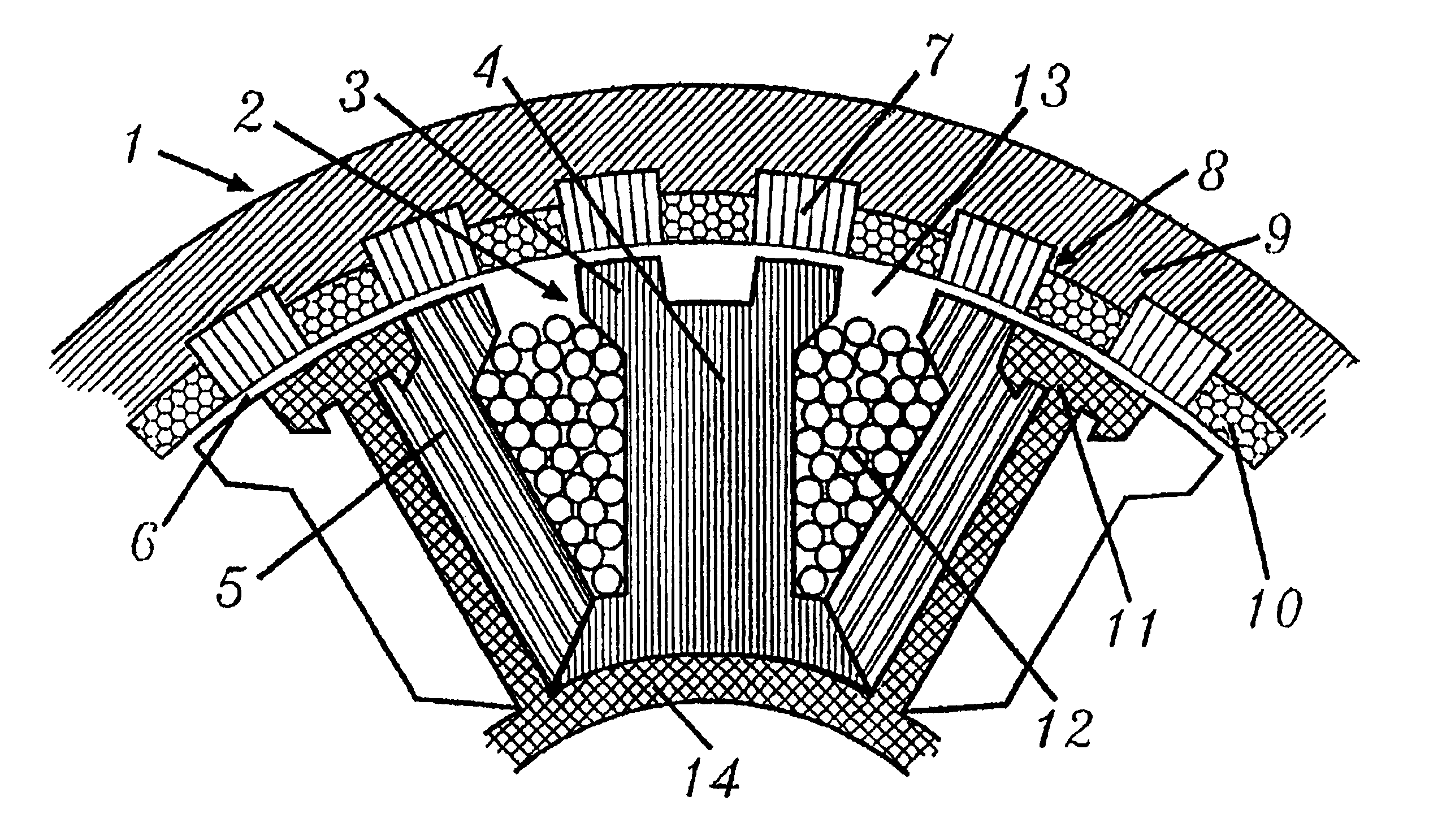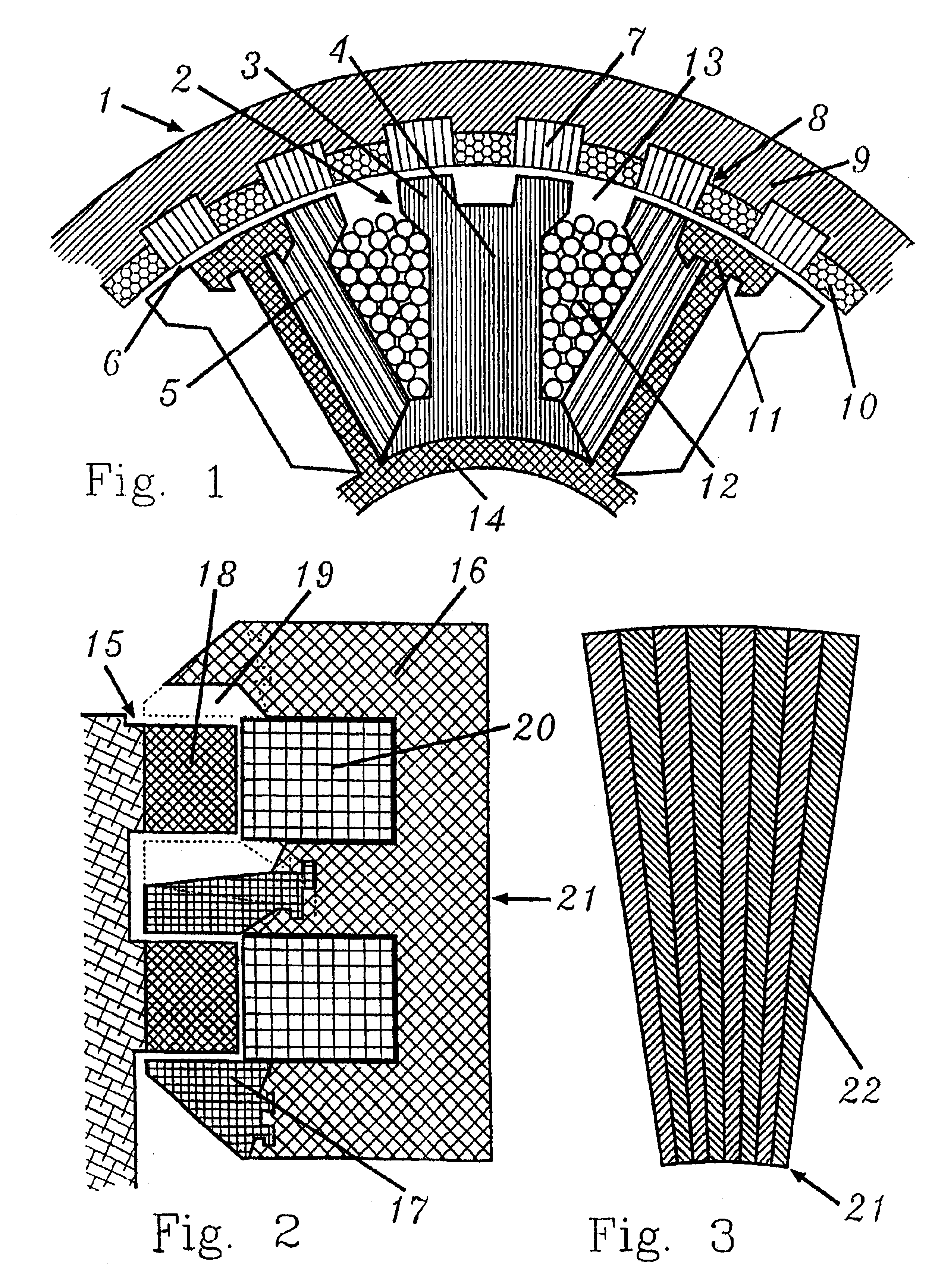Electric machine with soft magnetic teeth
a technology of electric machines and magnetic teeth, applied in the direction of dynamo-electric machines, electrical apparatus, magnetic circuits, etc., can solve the problems of gap in the circumferential direction between, and achieve the effect of reducing winding losses
- Summary
- Abstract
- Description
- Claims
- Application Information
AI Technical Summary
Benefits of technology
Problems solved by technology
Method used
Image
Examples
Embodiment Construction
[0032]FIG. 1 shows a cutout from the cross section of a reluctance machine according to invention (1) which consists of six identical magnetic units (2) with four teeth (3) each. In the cutout, only one magnetic unit is shown which consists of a spooled pole segment (4) and two identical non-spooled half pole segments (5). Pole and half pole segments consist of axially stacked grain oriented electric sheet with the preferred direction in radial direction. The half poles have one tooth at the surface of the air gap (6). 24 stator teeth (3) are arranged opposite 26 tooth segments (7) of the rotor (8). The distance between the teeth (3) of adjacent half poles (5) is larger by ⅔ of the tooth width compared to the distance of the teeth within a magnetic unit. The number of teeth per magnetic unit may be 4, 8, 12, 16 etc. (respectively 4×k with k being an integer), and the number of magnetic units may be any multiple of the number of phases.
[0033]So that the rotor teeth (7) do not generat...
PUM
 Login to View More
Login to View More Abstract
Description
Claims
Application Information
 Login to View More
Login to View More - R&D
- Intellectual Property
- Life Sciences
- Materials
- Tech Scout
- Unparalleled Data Quality
- Higher Quality Content
- 60% Fewer Hallucinations
Browse by: Latest US Patents, China's latest patents, Technical Efficacy Thesaurus, Application Domain, Technology Topic, Popular Technical Reports.
© 2025 PatSnap. All rights reserved.Legal|Privacy policy|Modern Slavery Act Transparency Statement|Sitemap|About US| Contact US: help@patsnap.com


